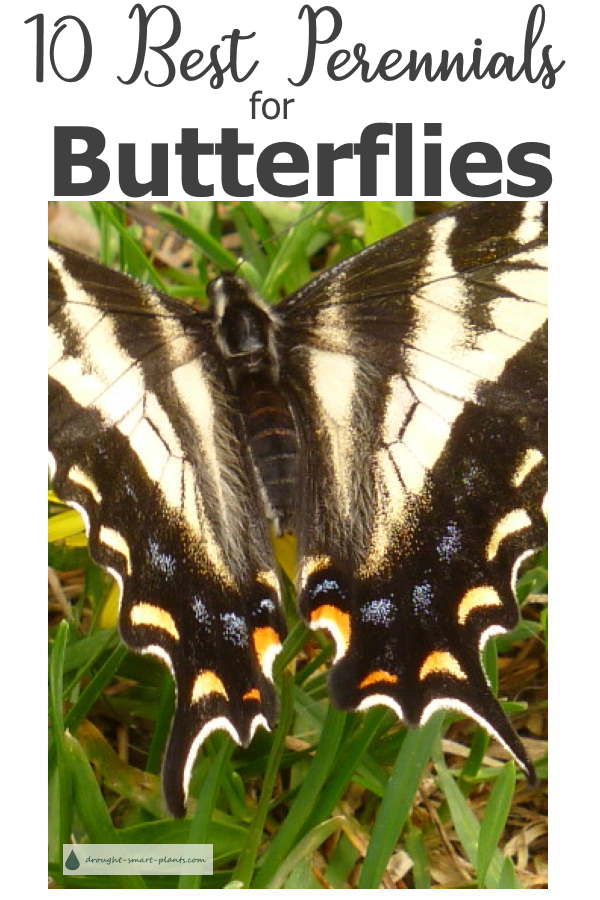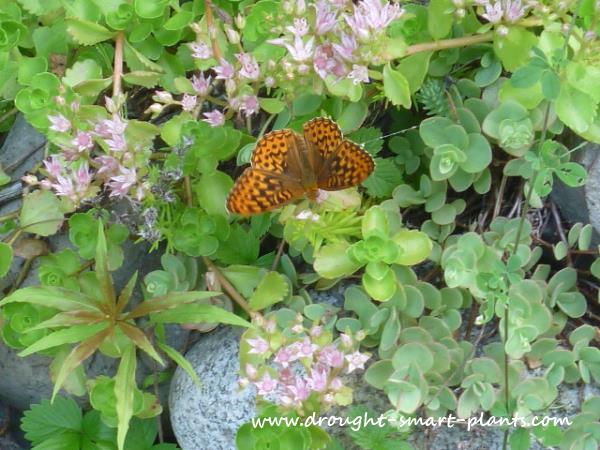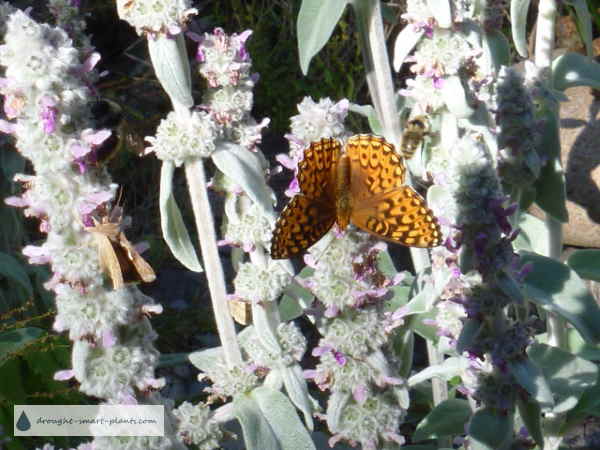Attract flying flowers to your garden
Choose from the Ten Best Perennials for Butterflies to add beauty, long lasting blooms and that most important feature of all…the magnetic attraction for the incredible flying flowers – butterflies;

Agastache – many species and varieties of this genus are so attractive to all kinds of butterflies, as well as bees and hummingbirds that you could have a garden of only them. It would lack the texture and the long bloom time of a mixed planting, but there are so many different ones that some would be in flower all through the summer.
Here are some of the best, valued for their butterfly attracting qualities:
Agastache ‘Black Adder’
Agastache rupestres
Agastache ‘Raspberry Summer’
Agastache ‘Summer Sunset’
All grow in loose rosettes of herbaceous leaves, with tall spires of bloom, on long square stems. As a mint relative, this trait is a giveaway.
Anaphalis margaritacea – pearly everlasting has white papery flowers and hairy velvety foliage.
Asclepias tuberosa is the only plant for Monarchs – although the adults will visit other flowers for nectar, the caterpillars require the Milkweeds for their only source of food.
Eupatorium – E. ‘Phantom’ is one of the many joe pye weeds. Grown mostly for their large panicles of bloom, they prefer a damper spot close to waters edge, thriving in the seasonal inundation of rain gardens or pond sides.
Foeniculum – Bronze Fennel is especially attractive to Swallowtail butterflies, which use it for one of the caterpillar host plants. It’s also a pretty foil with its finely cut foliage.
Gaillardia – G. ‘Frenzy’ is only one example of this colourful genus. Blanket flower, named for the bright stripes in concentric circles, attract many butterflies who use it to perch on.

Knautia macedonica
– although a short lived perennial, this plant re-seeds itself nicely to provide Great Spangled fritillary butterflies with nectar from July through August. The dark red blooms look similar to Scabiosa, a close relative.
Monarda didyma is the species form of this great plant with the odd looking flowers. They are formed out of two distinct types of flowers, making a top knot appearance that will attract many beneficial insects, including butterflies. The smell of the bruised leaves indicates their use as a tea flavoring, the basis of Earl Grey tea.
Two of the best types to look for are:
Monarda Grand Marshall
Monarda Peter’s Purple

Stachys lanata, or wooly lambs ears, is visited by many Great Spangled Fritillaries and Alfalfa skippers as well as some other small orange skippers.
The added bonus? Bees flock to them too, sometimes so glutted on the nectar that they camp overnight, only returning their pollen and nectar to the hive after the sun comes up in the morning.
Many Sedum varieties and species attract huge numbers of butterflies from mid July to the end of August as they flower in succession.
The best of all are some of the Sedum spurium varieties; Sedum spurium ‘John Creech’, Sedum spurium album ‘Superbum’ and Sedum spurium green form, which start opening their varied white to pink blooms over the span of a couple of weeks.
Pale Swallowtails, Anise Swallowtails, Mormon Fritillary, Great Spangled Fritillary, Wood Satyrs and Cloudless Sulphur butterflies will be extremely interested in stonecrops planted in rockeries and borders.
Plant a diverse selection of flowers using this guide to 10 Best Perennials for Butterflies in your garden; choose those that bloom over a long period in the warm summer months and into the fall, and make sure you have caterpillar host plants for butterfly food too.

